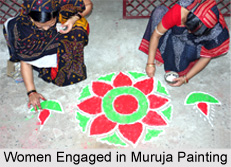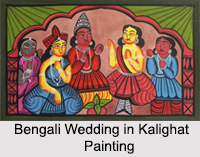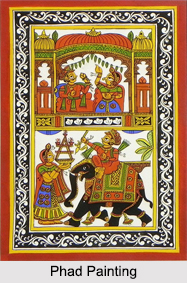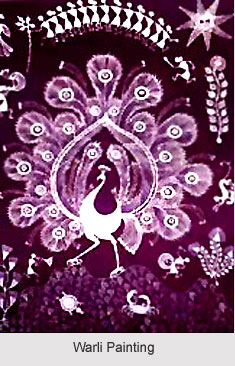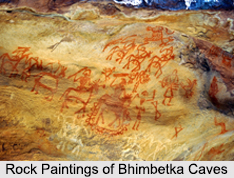 Indian paintings in pre-historic age dated back to the period which was found before the ancient Indus Valley Civilisation which was flourished during 3000 BC. Numerous portions of India bear the testimony of the changing forms of paintings which were flourished even during the primitive age.
Indian paintings in pre-historic age dated back to the period which was found before the ancient Indus Valley Civilisation which was flourished during 3000 BC. Numerous portions of India bear the testimony of the changing forms of paintings which were flourished even during the primitive age.
Historical records assert that the rock paintings or `petroglyphs` present in the rock shelters of Bhimbetka Caves in Madhya Pradesh are the earliest paintings in the country. Rock paintings have developed over the years and have given birth to more refined paintings, such as those in the Ajanta and Ellora Caves. Traces of rock paintings have been found on the walls of caves located in some districts of Madhya Pradesh, Uttar Pradesh, Andhra Pradesh, Telangana, Karnataka, Bihar, and Uttarakhand.
Features of Indian Paintings in Pre-Historic Age
The initial forms of prehistoric art are exceptionally ancient. The cupules are a mysterious kind of Paleolithic artistic marking. The early sculptures recognized as Venuses of Tan-Tan and Berekhat Ram are simple illustrations of human shapes. It is not the Upper Paleolithic, which anatomically is contemporary man creates identifiable carvings and pictures.
Different types of Indian Paintings in Pre-Historic Age
Following are the different types of Indian Paintings in Pre-Historic Age:
Rock Paintings of Bhimbetka Caves: It is believed as an evidence of long cultural connection. It was discovered in 1957-58. It consists of almost 400 painted rock shelters in five clusters. The pre-historic paintings of Bhimbetka Caves are believed to be created with the aid of wooden sticks, feathers, needles of porcupines and other objects. Several paintings were done over previous paintings, which were not erased quite often. The themes of these paintings were mainly animals, birds and those inspired by the daily lives of primitive men. Symbols of a long feather denote a peacock; a trunk implies an elephant and decorative signs mean a female deer. Some paintings have been performed by a single stroke and others have been done in bright shades. Shapes like circles, triangles, hexagons and rectangles have been employed largely. Images of bows, arrows, weapons like knives and those of the struggles and accomplishments were depicted in the Bhimbetka Cave paintings. Pictures of violent battles have also been painted here. Many other pictures also demonstrate the images of group dances stick dances and mask dances.
Rock Paintings of Rajasthan: In the year 2010, an Indian archaeologist had discovered about 35 kms of paintings belonging to the pre-historic period in Garadha region of Bundi district in the state of Rajasthan. Images of tigers, antelopes, panthers and human beings were noticed in these paintings. These paintings are present in about 32 sites along with the basin of the River Mangli. Colours used are yellow, red, black and white. The painting which was discovered near Mirzapur in 1883 is considered to be the first primitive Indian painting. It portrays a rhinoceros which is attacked by six men, some of whom are dressed in headgears made of feathers. Ever since this time, several other primitive cave paintings have been found near Hosangabad, Bhimbetka, Singanpur, Pachmarhi and Raichur.

